Table of Contents
We’ve seen Thunderbolt ports on enthusiast computers for many years now, but these days Thunderbolt is becoming the port everyone wants on a new laptop, regardless of size, form-factor, or budget.
While the original article discussed Thunderbolt 3 and 4 standards and notebooks, the latest update focuses on Thunderbolt 5.0 technology and laptops that offer at least one TB5 port.
Physically, Thunderbolt 5, Thunderbolt 4, and Thunderbolt 3 are all USB Type-C connectors, thus compact, reliable, and reversible. But while TB3 and TB4 are mostly similar standards, TB5 improves significantly on a couple of aspects.
For starters, both TB3 and TB4 support throughputs of up to 40 Gbps, both can drive external monitors via DisplayPort or HDMI video outs, both offer 10 GbE fast networking, as well as power delivery (at a minimum of 15W of power). So as far as speeds and overall capabilities go, Thunderbolt 4 is not faster or better than the previous standard.
The major difference for TB4 is in the amount of bandwidth allocated via PCIe. While Thunderbolt 3 systems are required to support 16 Gbps for PCIe connections, Thunderbolt 4 allocates 32 Gbps, and that translates into faster connections with peripherals (docks, eGPUs, storage units, etc) and improved video-output support. In this case, while TB3 supports a single 4K 60Hz display, TB4 supports either a single 8K 60 Hz display or two 4K 60 Hz displays per port. TB4 supports HDR10 as well, which TB3 did not.
On top of these, Thunderbolt 4 compliant docks are also required to support instant wake from sleep and VT-D/DMA protection against Thunderspy attacks. Finally, there’s one more aspect worth considering when it comes to cables, with TB4 branded cables of up to 2 meter in length required to support 40 Gbps speeds, while only shorter TB3 cables (most of them under 1 m) were able to maintain the same kind of speeds.
Thunderbolt 5, on the other hand, supports 80 Gbps of bi-directional bandwidth, 2x over the previous TB standards, and can support Bandwidth Boost when needed, which can extent the bandwidth to 120 Gbps. Furthermore, TB5 doubles the amount of bandwidth allocated to PCIe connections, to up to 64 Gbps, with supports for the PCIe gen 4 interface. This allows for better eGPU performance or the ability to connect more high-speed peripherals and higher-resolution, higher-refresh displays via TB5, such as 3x 4K displays at 144Hz or 2x 8K displays at 60 Hz.
Furthermore, Thunderbolt 5 can support improved power delivery speeds, at up to 240W via USB-C, potentially allowing for more laptops to bundle an USB-C plug charger instead of a proprietary plug. TB4 and TB3 supported up to 140W of PD charging in most implementations.
All in all, Thunderbolt 3, 4 and 5 are compact and versatile connectors that you can use to charge your laptop, transfer files at fast speeds, connect external monitors and other peripherals, including PCIe compatible graphics units (like the Razer Core, or the Aorus Gaming Box). This last aspect is particularly interesting, as it allows OEMs to design ultra-portable laptops that can also handle serious gaming once hooked up to these external GPU docks. However, the newer Thunderbolt 5 standards ensures faster speeds and higher bandwidth the the previous generations.
We’re going to further discuss the Thunderbolt 5.0 standard towards the end of this post. For now, let’s get to the complete list of all the available laptops and ultra-portables that offer at least one Thunderbolt 5, Thunderbolt 4 or 3 port at the time of this update.
Modern Thunderbolt 5 and Thunderbolt 4 laptops
Thunderbolt 5 was official introduced by Intel late-2023, and implemented in select devices as of today. I’m curating a list of such devices further down in the article.
The list of Thunderbolt 5 laptops
Here’s the list of existing notebooks that offer at least one Thunderbolt 5.0 port.
And if interested, here’s a list of docks and peripherals that support Thunderbolt 5.0, and a list of cables compatible with the standard, that allow up to 120 Gbps bandwidth and up to 240W PD charging.
So far, only a handful of high-performance laptops built on Intel Arrow-Lake HX hardware support TB5, through the Barlow Ridge discrete controller. At this point, Thunderbolt 5.0 is not SOC as with previous-generation TB4, thus requires an external controller.
I’d expect Thunderbolt 5.0 on more portable laptop designs to happen with the Intel Panther Lake platform, very-late 2025 and into 2026. Just my supposition, though, it hasn’t been confirmed.
The article is a work in progress though, adding new devices as they are announced. Let me know in the comments section if you spot something that should be in here and is not yet.
— updating
| Model | Type | Screen | Hardware | TB5 ports | |||
| Acer Predator Helios 16 Acer Predator Helios 18 |
gaming laptop | 16 or 18-inch matte mini LED 4K 120Hz- 18 inch IPS 2.5K 240Hz – 16 inch |
Core Ultra 9 275HX, up to RTX 5090, 99Wh battery, 2.7 kg – 16 inch, 3.5 kg – 18 inch |
2x | |||
| Alienware 16 Area-51 Alienware 18 Area-51 |
gaming laptop | 16 or 18-inch matte IPS 2.5K 300Hz – 18 inch IPS 2.5K 240Hz – 16 inch |
Core Ultra 9 275HX, up to RTX 5090, 99Wh battery, 3.4 kg – 16 inch, 4.4 kg – 18 inch |
2x | |||
| Asus ROG Strix Scar 16 Asus ROG Strix Scar 18 |
gaming laptop | 16 or 18-inch matte mini LED 2.5K 240Hz – 16 inch mini LED 2.5K 240Hz – 18 inch |
Core Ultra 9 275HX, up to RTX 5090, 90Wh battery, 2.8 kg – 16 inch, 3.3 kg – 18 inch |
2x | |||
| Gigabyte AORUS Master 16 Gigabyte AORUS Master 18 |
gaming laptop | 16-inch OLED glossy 18-inch mini LED matte both 2.5K 240Hz |
Core Ultra 9 275HX, up to RTX 5090, 99Wh battery, 2.5 kg – 16 inch, 3.5 kg – 18 inch |
1x | |||
| MSI Vector 16 HX AI MSI Vector 18 HX AI |
all-purpose laptop | 16 or 18-inch IPS matte 2.5K 240Hz |
Core Ultra 9 275HX, up to RTX 5090, 90Wh battery, 2.7 kg – 16 inch, 3.5 kg – 18 inch |
2x | |||
| MSI Raider 18 HX AI |
gaming laptop | 18-inch mini LED matte 4K 120Hz |
Core Ultra 9 275HX, up to RTX 5090, 90Wh battery, 3.5 kg |
2x | |||
| MSI Titan 18 HX AI | gaming laptop | 18-inch mini LED matte 4K 120Hz |
Core Ultra 9 285HX, up to RTX 5090, 99Wh battery, 3.6 kg |
2x | |||
| Lenovo Legion 9 18 | gaming laptop | 18-inch IPS matte dual mode 4K 240Hz or 2K 440Hz, optional 3D |
Core Ultra 9 275HX, up to RTX 5090, 99Wh battery, 3.5 kg |
2x | |||
| Razer Blade 18 | gaming laptop | 18-inch IPS matte dual mode 4K 240Hz or 2K 440Hz |
Core Ultra 9 275HX, up to RTX 5090, 99Wh battery, 3.1 kg |
1x | |||
Previously, Thunderbolt 4 came in 2020, and Intel’s Tiger Lake and Alder Lake Core U platforms (as well as the more recent Raptor Lake and Lunar Lake updates) include an integrated Thunderbolt 4 controller by default.
That means the vast majority of available Tiger/Alder/Raptor/Lunar Lake laptops (and some future platforms) include at least one Thunderbolt 4 port by default. You’ll find a detailed list of modern Intel ultraportables in this separate article that goes over EVO-certified ultrabooks, but for the most part, expect Thunderbolt connectivity on the majority of Intel computers released past early 2021.
In the past, Thunderbolt functionality was not entirely baked into the chips, and manufacturers had to integrate a separate controller on the motherboards in order to implement Thunderbolt 3, as well as pay Intel for the certification (the right to have TB3). That’s why Thunderbolt 3 ports were mostly available on higher-tier products, and rarely on affordable laptops. Furthermore, because Thunderbolt is an Intel and Apple proprietary technology, that’s why AMD laptops do not include Thunderbolt ports of any kind, instead offer up to USB 4.0 ports with somewhat similar functionality.
Further down is the list of existing notebooks with Thunderbolt 3 and Thunderbolt 4 ports. As mentioned already, keep in mind that I haven’t included many of the 2022-2024 devices, as the Intel platforms of that time came with an integrated TB3 controller by default, and that means Thunderbolt is offered by default on those devices.
Most Intel laptops available in stores as of early-2022 include Thunderbolt 4 connectivity by default, while in the case of older notebooks, only select options were available with Thunderbolt 3 ports.
Since there are many such computers out there, we’ll split them into three different groups: compact laptops (with 13-inch screens or smaller), large-screen portable laptops (15 to 17-inch screens), and full-size notebooks (15-inch screens or larger) in the following part of this article.
We’ll also include details on their format, hardware platform, type of TB3 port (x2 or x4 PCIe lanes), whether each laptop can charge via USB-C, and the starting MSRP price in the US, in case you’re looking for something within a specific budget or one of the cheaper Thunderbolt laptops out there. Keep in mind prices and availability vary over time, so follow the links for more details, as well as the link on each unit’s name for our detailed reviews and guides.
I’ll also add that the lists below only include laptops released in the last 2-3 years, and for the most part, only the latest version of each laptop is mentioned, even if the previous generations supported Thunderbolt 3 as well.
13-inch (and smaller) ultraportables with Thunderbolt 3/4 connectors
|
|||||||
| Model | Type | Screen | Hardware | TB3 ports | Charging | Updated | Price |
| Acer Aspire Switch 12S | 2-in-1 | 12.5″ touch | Core Y w/ Intel HD | 1 | No | 2017 | $1199 |
| Acer Aspire R13 | 2-in-1 | 13.3″ touch | Core U w/ Intel HD | 1 x2 | No | 2017 | $899 |
| Acer Swift 3 13.5 | clamshell | 13.5″ | Core U w/ Intel HD | 1 x4 | Yes | 2020 | $999 |
| Alienware 13 | Gaming | 13.3″ | Core HQ w/ Nvidia GTX 1060 | 1 x4 | No | 2017 | $1199 |
| Asus Zenbook UX391 | Ultraportable | 13.3″ | Core U w/ Intel UHD | 2 x4 | Yes | 2018 | $1199 |
| Apple MacBook Air | Ultraportable | 13.3″ | Core Y w/ Intel HD | 2 x4 | Yes | 2019 | $1099 |
| Apple MacBook Pro 13 | Ultraportable | 13.3″ | Core U w/ Intel Iris UHD | 4 x4 | Yes | 2019 | $1299 |
| Dell Latitude 12 7000 | Ultraportable | 12.0″ | Core U w/ Intel UHD | 2 x4 | Yes | 2018 | $1079 |
| Dell Latitude 12 7000 2-in-1 | 2-in-1 | 12.5″ touch | Core Y w/ Intel HD | 2 x4 | Yes | 2019 | $1049 |
| Dell Latitude 13 7000 |
Ultraportable | 13.3″ | Core U w/ Intel UHD | 1 x4 | Yes | 2019 | $1199 |
| Dell XPS 13 | Ultraportable | 13.3″ | Core U w/ Intel UHD | 1 x4 | Yes | 2020 | $899 |
| Dell XPS 13 2-in-1 | Convertible | 13.3″ | Core Y w/ Intel UHD | 1 x4 | Yes | 2020 | $1049 |
| Huawei MateBook X Pro | Convertible | 13.9″ touch | Core U w/ up to MX250 | 1 x2 | Yes | 2020 | $999 |
| HP Elite X2 | Tablet | 12.0″ touch | Core Y w/ Intel HD | 1 x4 | Yes | 2018 | $899 |
| HP EliteBook 830 | Ultraportable | 13.3″ | Core U w/ Intel UHD | 1 x4 | Yes (**) | 2018 | $1299 |
| HP EliteBook Folio | Ultraportable | 12.5″ | Core Y w/ Intel HD | 2 x4 | Yes | 2018 | $1099 |
| HP Elitebook x360 13 | Convertible | 13.3″ touch | Core U w/ Intel UHD | 1 x4 | Yes | 2019 | $2399 |
| HP Spectre x360 13 | Convertible | 13.3″ touch | Core U w/ Intel UHD | 2 x4 | Yes | 2020 | $1049 |
| Lenovo IdeaPad 720s 13 | Ultraportable | 13.3″ | Core U w/ Intel UHD | 1 x2 | Yes | 2017 | $849 |
| Lenovo IdeaPad 730s 13 | Ultraportable | 13.3″ glossy | Core U w/ Intel UHD | 2 x4 | Yes | 2018 | $899 |
| Lenovo Yoga 730 13 | Convertible | 13.3″ touch | Core U w/ Intel UHD | 2 x4 | Yes | 2018 | $999 |
| Lenovo Yoga 920 | Convertible | 13.9″ touch | Core U w/ Intel UHD | 2 x4 | Yes | 2017 | $1099 |
| Lenovo Yoga C930 | Convertible | 13.9″ touch | Core U w/ Intel UHD | 2 x4 | Yes | 2018 | $1249 |
| Lenovo Yoga S940 | Clamshell | 13.9″ glossy | Core U w/ Intel UHD | 2 x4 | Yes | 2019 | $1499 |
| Lenovo ThinkPad X390 | Convertible | 13.3″ matte | Core U w/ Intel UHD | 1 x4 | Yes | 2019 | $1199 |
| Lenovo ThinkPad X1 Tablet | Tablet | 13.0″ touch | Core U w/ Intel UHD | 1 | Yes | 2018 | $1299 |
| Lenovo ThinkPad X 12-inch | Ultraportable | 12.5″ | Core U w/ Intel UHD | 1 | Yes | 2018 | $1099 |
| Razer Blade Stealth 13 | Ultraportable | 13.3″ matte/touch | Core U w/ GTX 1650 | 1 x4 | Yes | 2020 | $1399 |
| Samsung Notebook 9 Pen | Convertible | 13.3″ touch | Core U w/ UHD 620 | 2 x4 | Yes | 2019 | $1399 |
| Samsung Notebook 9 Pro | Convertible | 13.3″ touch | Core U w/ UHD 620 | 2 x4 | Yes | 2019 | $1099 |
| Toshiba Portégé X20W | Convertible | 12.5″ touch | Core U w/ Intel UHD | 1 x4 | Yes | 2018 | $999 |
| Toshiba Portégé X30 | Ultraportable | 13.3″ touch | Core U w/ Intel UHD | 1 x4 | Yes | 2020 | $1299 |
If you’re looking for a larger screen and faster hardware, but still want to stay within compact and portable ranges (under 4 lbs for 14-inchers, under 5 lbs for 15 inchers, under 6 lbs for 17-inchers), then these are the options to consider.
14 to 17-inch portable laptops with Thunderbolt 3 connectors |
|||||||
| Model | Type | Screen | Hardware | TB3 ports | Charging | Updated | Price |
| Acer Swift 7 Black Edition | Convertible | 14.0″ | Core Y w/ Intel HD | 1 x4 | Yes | 2019 | $1499 |
| Acer Swift 3 14 | clamshell | 14.0″ | Core U w/ Intel UHD | 1 x4 | Yes | 2020 | $799 |
| Acer TravelMate P6 P614 | clamshell | 14.0″ | Core U w/ Intel UHD | 1 x4 | Yes | 2020 | $1099 |
| Acer ConceptD 7 | Workstation | 15.6″ | Core H w/ Quadro | 1 x4 | No | 2019 | $1799 |
| Acer Predator Triton 500 | Gaming | 15.6″ | Core H w/ up to RTX 2080MQ | 1 x4 | No | 2020 | $1799 |
| Acer Predator Triton 700 | Gaming | 15.6″ | Core H w/ Nvidia GTX 1080MQ | 1 x4 | No | 2018 | $1899 |
| Alienware m15 | Gaming | 15.6″ matte | Core HK w/ up to Nvidia RTX 2080 Max-Q | 1 x4 | No | 2019 | $1299 |
| Alienware m17 | Gaming | 17.3″ matte | Core HK w/ up to Nvidia RTX 2080 Max-Q | 1 x4 | No | 2019 | $1599 |
| Apple MacBook Pro 15 | Ultraportable | 15.6″ glossy | Core H w/ up to AMD Vega 20 | 4 x4 | Yes | 2019 | $2099 |
| Apple MacBook Pro 16 | Ultraportable | 16″ glossy | Core HK w/ up to AMD Radeon Pro | 4 x4 | Yes | 2020 | $2299 |
| Asus ExpertBook B9450FA | clamshell | 14.0″ | Core U w/ Intel HD | 1 x4 | Yes | 2020 | $1499 |
| Asus ROG Zephyrus GX501 | Gaming | 15.6″ matte | Core H w/ up to Nvidia GTX 1080MQ | 1 x4 | No | 2017 | $1699 |
| Asus ROG Zephyrus S15 GX502 | Gaming | 15.6″ matte | Core H w/ up to Nvidia RTX 2080 Super MQ | 1 x4 | No | 2020 | $1999 |
| Asus ROG Zephyrus M15 GU502 | Gaming | 15.6″ matte | Core H w/ up to Nvidia RTX 2070 Super MQ | 1 x4 | No | 2020 | $1799 |
| Asus ROG Zephyrus GM501 | Gaming | 15.6″ matte | Core H w/ Nvidia GTX 1070 | 1 x4 | No | 2017 | $1699 |
| Asus StudioBook Pro W700 | Workstation | 17.3″ matte | Core U w/ Nvidia Quadro | 1 x4 | – | 2019 | TBA |
| Asus StudioBook Pro X W730 | Workstation | 17.3″ matte | Core U w/ Nvidia Quadro | 2 x4 | – | 2019 | TBA |
| Asus Zenbook 3 Deluxe UX490UA | Ultraportable | 14.0″ | Core U w/ Intel HD | 2 x4 | Yes | 2018 | $1199 |
| Asus Zenbook Pro UX550 | Multimedia | 15.6″ | Core H w/ Nvidia GTX 1050 Ti | 2 x4 (*) | No | 2018 | $1299 |
| Asus Zenbook Pro UX580 | Multimedia | 15.6″ | Core H w/ Nvidia GTX 1050 Ti | 2 x4 (*) | No | 2018 | $1499 |
| Asus ZenBook Pro Duo UX581 | Multimedia | 15.6″ | Core HK w/ Nvidia RTX 2060 | 1 x4 | No | 2019 | $2499 |
| Clevo PB851EF-G / Sager NP8356 | Gaming | 15.6″ | Core H w/ up to RTX 2070 | 1 x4 | No | 2019 | $1799 |
| Clevo PB871EF-G / Sager NP8376 | Gaming | 17.3″ | Core H w/ up to RTX 2070 | 1 x4 | No | 2019 | $1799 |
| Dell Precision 15 5000 Series | Workstation | 15.6″ | Core HK or Xeon w/ Nvidia Quadro | 1 x4 | Yes | 2019 | $1549 |
| Dell Latitude 14 7000 |
Ultraportable | 14.0″ | Core U w/ Intel HD | 1 x4 | Yes | 2019 | $1349 |
| Dell Latitude 14 7000 2-in-1 |
2-in-1 | 14.0″ touch | Core U w/ Intel HD | 1 x4 | Yes | 2019 | $1349 |
| Dell Vostro 15 7000 | Multimedia | 15.6″ matte | Core H w/ Nvidia GTX 1660Ti | 1 x4 | Yes | 2019 | $1349 |
| Dell XPS 15 | Multimedia | 15.6″ touch | up to 9th gen Core HK w/ Nvidia GTX 1650 | 1 x4 | Yes | 2019 | $999 |
| Dell XPS 15 2-in-1 | Convertible | 15.6″ touch | up to 8th gen Core G w/ Radeon RX Vega M | 2 x4 | Yes | 2018 | $999 |
| Gigabyte Aero 15 | Gaming | 15.6″ | up to 9th gen Core H w/ up to Nvidia RTX 2080MQ | 1 x4 | No | 2019 | $2099 |
| Gigabyte Aero 17 | Gaming | 17.3″ | up to 9th gen Core H w/ up to Nvidia RTX 2080MQ | 1 x4 | No | 2019 | $2599 |
| HP Omen 15 | Gaming | 15.6″ | up to 9th gen Core H w/ up to Nvidia RTX 2080MQ | 1 x4 | No | 2019 | $1499 |
| HP Omen X 2s | Gaming | 15.6″ | up to 9th gen Core H w/ up to Nvidia RTX 2070MQ | 1 x4 | No | 2019 | $1899 |
| HP Omen 17 | Gaming | 17.3″ | up to 8th gen Core H w/ up to Nvidia GTX 1070MQ | 1 x4 | No | 2018 | $1099 |
| HP Spectre x360 15 | Convertible | 15.6″ touch | up to 8th gen Core G w/ Radeon RX Vega M | 1 x4 | Yes (*) | 2019 | $1299 |
| HP EliteBook 840 | Ultraportable | 14.0″ | up to 8th gen Core U w/ Intel UHD | 1 x2 | Yes (*) | 2018 | $1249 |
| HP EliteBook 850 | Ultraportable | 15.6″ | up to 8th gen Core U w/ AMD RX540 | 1 x2 | Yes (*) | 2018 | $1249 |
| HP EliteBook 1040 | Ultraportable | 14.0″ | up to 7th gen Core U w/ Intel HD | 1 x4 | Yes (**) | 2018 | $1399 |
| HP ZBook 14u | Workstation | 14.0″ | up to 8th gen Core U w/ AMD Radeon™ Pro WX 3100 | 1 x4 | Yes (**) | 2019 | $1549 |
| HP ZBook 15u | Workstation | 15.6″ | up to 8th gen Core U w/ AMD Radeon™ Pro WX 3100 | 1 x4 | Yes (**) | 2019 | $1649 |
| Lenovo IdeaPad 720s 14 | Ultraportable | 14.0″ | up to 7th gen Core U w/ Nvidia 940MX | 1 x2 (?) | – | 2018 | $999 |
| Lenovo IdeaPad 720s 15 | Ultraportable | 14.0″ | up to 7th gen Core U w/ up to GTX 1050 Ti | 1 x2 (?) | No | 2018 | $999 |
| Lenovo ThinkPad 25 | Ultraportable | 14.0″ | up to 7th gen Core U w/ Nvidia 940MX | 1 x2 | Yes | 2018 | $1899 |
| Lenovo ThinkPad P1 | Workstation | 15.6″ | up to 9th gen Core HK w/ up to Quadro T2000 | 2 x4 | Yes (*) | 2019 | $1499 |
| Lenovo ThinkPad P53s | Workstation | 15.6″ | Core U w/ up to Quadro P520 | 1 x2 | No | 2019 | $1499 |
| Lenovo ThinkPad T490 | Ultraportable | 14.0″ | up to 8th gen Core U w/ Nvidia MX250 | 1 x4 (?) | Yes | 2019 | $859 |
| Lenovo ThinkPad T590 | Ultraportable | 15.6″ | up to 8th gen Core U w/ Nvidia MX250 | 1 x4 (?) | Yes | 2019 | $999 |
| Lenovo ThinkPad T480s | Ultraportable | 14.0″ | up to 8th gen Core U w/ Nvidia MX150 | 1 x2 | Yes | 2018 | $1199 |
| Lenovo ThinkPad T490s | Ultraportable | 14.0″ | up to 8th gen Core U w/ Nvidia MX250 | 1 x4 (?) | Yes | 2019 | $1199 |
| Lenovo ThinkPad X1 Carbon | Ultraportable | 14.0″ | up to 8th gen Core U w/ Intel UHD | 2 x4 | – | 2019 | $1199 |
| Lenovo ThinkPad X1 Extreme | Multimedia | 15.6″ | up to 9th gen Core HK w/ Nvidia 1650MQ | 2 x4 | Yes (*) | 2019 | $1849 |
| Lenovo ThinkPad X1 Yoga | Convertible | 14.0″ | up to 8th gen Core U w/ Intel UHD | 2 x4 | Yes | 2019 | $1499 |
| Lenovo Yoga 730 15 | Multimedia | 15.6″ touch | Core HQ w/ Nvidia 1050 | 1 x2 | No | 2018 | $999 |
| Lenovo Yoga C730 | Convertible | 15.6″ touch | up to 8th gen Core U w/ Intel UHD | 1 x4 | Yes | 2018 | $1649 |
| LG Gram 15 | Ultraportable | 15.6″ touch | up to 8th gen Core U w/ Intel UHD | 1 x4 | Yes (*) | 2018 | $1299 |
| LG Gram 17 | Ultraportable | 17.3″ matte/touch | 8th gen Core U w/ Intel UHD | 1 x4 | Yes (*) | 2019 | $1699 |
| MSI GS65 Stealth Thin | Gaming | 15.6″ matte | up to 9th gen Core HK w/ up to Nvidia RTX 2080MQ | 1 x4 | No | 2019 | $2099 |
| MSI GS75 Stealth Thin | Gaming | 17.3″ matte | up to 9th gen Core HK w/ up to Nvidia RTX 2080MQ | 1 x4 | No | 2019 | $2199 |
| MSI P65 Creator | Workstation | 15.6″ matte | up to 9th gen Core HK w/ up to RTX 2080MQ | 1 x4 | No | 2019 | $1199 |
| MSI WS65 | Workstation | 15.6″ matte | up to 8th gen Core H w/ Quadro P3200 | 1 x4 | No | 2019 | $2699 |
| Razer Blade 14 | Gaming | 14.0″ | up to 7th gen Core H w/ Nvidia GTX 1060 | 1 x4 | No | 2018 | $1799 |
| Razer Blade 15 Advanced | Gaming | 15.6″ matte | up to 8th gen Core H w/ up to Nvidia RTX 2080MQ | 1 x4 | No | 2019 | $1899 |
| Razer Blade Pro 17 | Gaming | 17.3″ | up to 9th gen Core H w/ up to Nvidia RTX 2080MQ | 1 x4 | No | 2019 | $2699 |
| Samsung Notebook 9 Pen 15 | Convertible | 15.6″ touch | 8th gen Core U w/ MX150 | 2 x4 | Yes | 2019 | $1599 |
Last but not least, if you don’t care about portability at all and simply want a powerful computer with a large screen, capable graphics and a Thunderbolt 3 port, these are the options for you.
15 to 21-inch full-size notebooks with Thunderbolt 3 connectors |
|||||||
| Model | Type | Screen | Hardware | TB3 ports | Charging | Updated | Price |
| Acer Aspire V15 Nitro | Multimedia | 15.6″ | Core HQ w/ up to GTX 1060 | 1 x4 | No | 2017 | $999 |
| Acer Aspire V17 Nitro | Multimedia | 17.3″ | Core HQ w/ up to GTX 1060 | 1 x4 | No | 2017 | $999 |
| Acer Predator 15 | Gaming | 15.6″ | Core HQ w/ up to GTX 1070 | 1 x4 | No | 2018 | $1499 |
| Acer Predator 17 | Gaming | 17.3″ | Core HQ w/ up to GTX 1070 | 1 x4 | No | 2018 | $1499 |
| Acer Predator Helios 500 | Gaming | 17.3″ | Core H w/ Nvidia GTX 1070 | 2 x4 | No | 2018 | $1899 |
| Acer Predator Triton 900 | Gaming | 17.3″ | Core H w/ RTX GTX 2080 | 1 x4 | No | 2019 | $3999 |
| Alienware Area 51m | Gaming | 17.3″ | Core HK w/ up to Nvidia RTX 2080 | 1 x4 | No | 2019 | $2499 |
| Alienware 15 | Gaming | 15.6″ | Core HK w/ up to GTX 1080 | 1 x4 | No | 2018 | $1199 |
| Alienware 17 | Gaming | 17.3″ | Core HK w/ up to GTX 1080 | 1 x4 | No | 2018 | $1499 |
| Asus ROG Mothership GZ700GX | Gaming | 17.3″ | Core HK w/ up to Nvidia RTX 2080 | 1×4 | No | 2019 | – |
| Asus ROG G703 Series | Gaming | 17.3″ | Core HK w/ up to Nvidia RTX 2080 | 1×4 | No | 2019 | $2999 |
| Asus ROG G752 Series | Gaming | 17.3″ | Core HQ w/ up to GTX 1070 | 1 | No | 2017 | $1399 |
| Asus ROG GL502VM | Gaming | 15.6″ | Core HQ w/ Nvidia GTX 1060 | 1 x2 | No | 2017 | $1399 |
| Asus ROG GL702VM | Gaming | 17.3″ | Core HQ w/ Nvidia GTX 1060 | 1 x2 | No | 2017 | $1399 |
| Asus ROG GX800 | Gaming | 17.3″ | Core HK w/ up to GTX 1080 SLI | 1 | No | 2018 | $2499 |
| Clevo P750TM1-G / Sager NP9156 | Gaming | 15.6″ | Core K w/ up to GTX 2080 | 1 x4 | No | 2019 | $1999 |
| Clevo P775TM1-G / Sager NP9176 | Gaming | 17.3″ | Core K w/ up to GTX 2080 | 1 x4 | No | 2019 | $1999 |
| Clevo P750DM2 / Sager NP9152 / Schenker XMG U507 | Gaming | 15.6″ | Core K w/ up to GTX 1080 | 1 x4 | No | 2018 | $1799 |
| Clevo P775DM3 / Sager NP9172 / Schenker XMG U717 | Gaming | 17.3″ | Core K w/ up to GTX 1080 | 1 x4 | No | 2018 | $1849 |
| Dell G3 Gaming 15/17 | Gaming | 15.6″ | Core H w/ Nvidia GTX 1660Ti | 1 x4 | No | 2019 | $1099 |
| Dell G5 Gaming 15 | Gaming | 15.6″ | Core H w/ up to Nvidia RTX 2060 | 1 x4 | No | 2019 | $999 |
| Dell G7 Gaming 15 | Gaming | 15.6″ | Core HK w/ up to Nvidia RTX 2080 MQ | 1 x4 | No | 2019 | $1099 |
| Dell G7 Gaming 17 | Gaming | 17.3″ | Core H w/ up to Nvidia RTX 2080 MQ | 1 x4 | No | 2019 | $1349 |
| Dell Inspiron Gaming 7577 | Gaming | 15.6″ | Core HQ w/ Nvidia 1060 MQ | 1 x4 | No | 2018 | $999 |
| Dell Precision 15 3000 Series | Workstation | 15.6″ | Core HK w/ Nvidia Quadro | 1 x4 | No | 2019 | $999 |
| Dell Precision 15 7000 series | Workstation | 15.6″ | Core HK or Xeon w/ AMD FirePro or Nvidia Quadro | 1 x4 | No | 2019 | $1199 |
| Dell Precision 17 7000 series | Workstation | 17.3″ | Core HK or Xeon w/ Nvidia Quadro | 1 x4 | No | 2019 | $2299 |
| Lenovo Legion Y720 | Gaming | 15.6″ | Core HQ w/ up to GTX 1060 | 1 x4 | No | 2017 | $1099 |
| Lenovo Legion Y730 15 | Gaming | 15.6″ | Core HQ w/ up to GTX 1060 | 1 x2 | No | 2018 | $1099 |
| Lenovo Legion Y730 17 | Gaming | 15.6″ | Core HQ w/ up to GTX 1060 | 1 x4 | No | 2018 | $1099 |
| Lenovo Legion Y740 15 | Gaming | 15.6″ | Core H w/ up to RTX 2070 Max-Q | 1 x4 | No | 2019 | $1599 |
| Lenovo Legion Y740 17 | Gaming | 17.3″ | Core H w/ up to RTX 2080 Max-Q | 1 x4 | No | 2019 | $1599 |
| Lenovo Legion Y920 | Gaming | 17.3″ | Core HQ w/ GTX 1070 | 1 x4 | No | 2017 | $2499 |
| Lenovo ThinkPad P53 | Workstation | 15.6″ | Core H or Xeon w/ Nvidia Quadro | 2 x4 | No | 2019 | $1999 |
| Lenovo ThinkPad P73 | Workstation | 17.3″ | Core H or Xeon w/ Nvidia Quadro | 2 x4 | No | 2019 | $1999 |
| HP ZBook 15 |
Workstation | 15.6″ | Core HK w/ Nvidia Quadro | 1 x4 | No | 2019 | $1499 |
| HP ZBook 17 | Workstation | 17.3″ | Core HK w/ Nvidia Quadro | 1 x4 | No | 2019 | $1999 |
| MSI GT73 Titan | Gaming | 17.3″ | Core HK w/ up to GTX 1070 SLI | 1 x4 | No | 2018 | $2199 |
| MSI GT75 Titan | Gaming | 17.3″ | Core HK w/ Nvidia RTX 2080 | 1 x4 | No | 2019 | $2999 |
| MSI GT76 Titan | Gaming | 17.3″ | Core K w/ Nvidia RTX 2080 | 1 x4 | No | 2019 | $2999 |
| MSI GT83VR Titan Pro | Gaming | 18.4″ | Core HK w/ up to GTX 1080 SLI | 1 x4 | No | 2018 | $3499 |
| MSI WT75 | Workstation | 17.3″ | Core K w/ up to Quadro P5200 | 1 x4 | No | 2019 | $3999 |
Thunderbolt 5 and 4/3 explained
Here are the major updates that you need to be aware of when it comes to Thunderbolt 5.0
- still the ubiquitous and versatile USB-C physical connector;
- allows for faster bandwidth, 80 Gbps bi-directional and up to 120 Gbps with Bandwidth Boost technology when needed;
- allows for asymmetric operation with Bandwidth Boost (120 Gbps transmit, 40 Gbps receive, alongside standard 80 Gbps transmit/ 80 Gbps receive – source);
- supports PCIe gen 4 connectivity and doubles the amount of PCIe data throughput to up to 64 Gbps, allowing for faster external graphics units and faster/more external docks and storage;
- supports DisplayPort 2.1 up to 80 Gbps;
- supports 140W required Power Delivery charging and optional up to 240W;
- doubles the bandwidth allocated to Thunderbolt Networking (20 Gbps dull duplex);
- all these are possible by implementing PAM-3 (Pulse Amplitude Modulation with three levels) signaling technology, allowing for full performance via existing TB3/TB4 cables up to 1m long, or dedicated TB5 cables up to 2m;
- is fully compatible with previous Thunderbolt versions and accessories.
More details are available on Intel’s official page on the Thunderbolt 5.0 standard.
The reminding of the article discusses previous-gen Thunderbolt 4.0 and 3.0 standards, with the technologies offered at that level.
Now, let’s get back to why Thunderbolt 3 port is such a big deal. Here are a couple of thoughts:
- The USB Type-C connector is compact and reversible, so compatible cables are not going to take a lot of space. Also, unlike most other connectors like USB Type-A, DisplayPort, HDMI, etc, a USB Type-C cable no longer has a “right-way” to plug in, making it much easier to use.
- USB-C ports are more and more widely spread on mother devices, so down the road, they could replace all the other standard connectors, which means we could end up with one universal connector and one type of cable for pretty much all basic needs.
- Not all USB-C ports support Thunderbolt, as the technology is only reserved to certain Intel based-devices with an appropriate TB3 chip. That might change in the future, as Intel plans to bake Thunderbolt 3 compatibility within the CPUs.
- TB3 allows for very fast transfer speeds of up to 40 Gbps, which opens up space for a multitude of compatible accessories: fast external storage units, external graphics and processing units, external docking stations, etc.
- TB3 can output video, audio, and power at the same time, so is a solution for connecting high-resolution external monitors or TV sets.
- TB3 is also capable of network transfer speeds of up to 10 GbE, so can be a solution if you want to quickly transfer content within your network.
- TB3 can also be used for charging your device at up to 100 W of power. So good-bye dedicated charging cables. (it can also charge laptops that normally ship with higher capacity chargers, but slower and while performing less-demanding loads. However, you should keep in mind that not all laptops allow TB3 charging, even if the port theoretically supports it).

Thunderbolt 3 is versatile, compact, and easy to use – source
One compact port can do all of these, so no wonder manufacturers are adding TB on the latest ultrabooks.
But what does Thunderbolt mean for ultraportable notebooks? It allows OEMs to design thinner, lighter and smaller devices which wouldn’t have space around their sides to accommodate regularly sized ports. Yes, that means you’ll need to buy adapters for your existing cables and devices, but to some extent, that’s a sacrifice I’m willing to make. These smaller computers can be hooked up to peripherals and transformed from the ultraportable travel companions they represent by their own, to business, multimedia, and even gaming computers. You can hook up an external monitor for extra screen real-estate, a storage unit, a docking station with extra ports or those graphics units. Just keep in mind that CPU’s can be a bottleneck un ultraportable laptops hooked up to eGPU, as these are usually built on Core Y or Core U processors, but thin-and-light 15-inchers with quad/six-core Core H processors and a solid amount of RAM will be good matches for the graphics capabilities of a full-size desktop card.
There is however a fair amount of confusion around Thunderbol, mostly because it’s impossible to determine whether a device is TB compatible or not by simply looking at the physical connector. And that’s because TB3 and regular USB 3.1 ports both use a USB Type-C physical connector, but have different capabilities. The Apple MacBook, for instance, offers a USB 3.1 port, but not Thunderbolt. Standard USB 3.1 Type-C connectors still support data, video and audio transfers, but are limited to a lower bandwidth, so will perform slower, can’t carry power and aren’t compatible with graphics units, among others.
As of early 2025, there are many Thunderbolt compatible accessories available in stores, and we covered some of the better ones in this article. Even so, having a Thunderbolt port on your laptop might still not sit that high on your list of priorities, but you should consider something with TB for future-proofness, especially if you plan to take advantage of the matching peripherals down the line and plan to keep the laptop you’re buying today for at least 2-3 years.
With that in mind, we’ll wrap this up here. I’ll continue to update this list of Thunderbolt 5 and older laptops as often as possible, adding the new entries as they become available, but if you spot something that should be in here and is not, make sure to tell me about it in the comments section below, where I’ll also wait for your feedback and questions if any.


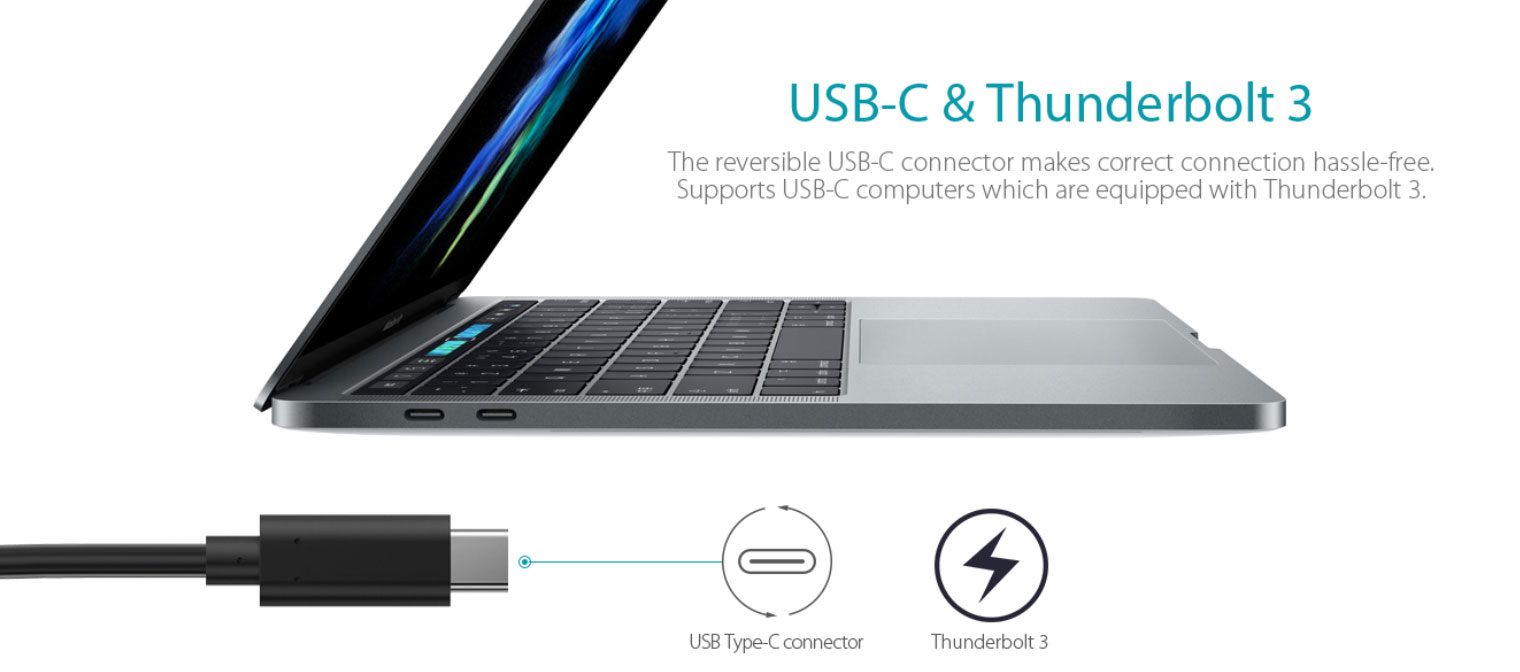
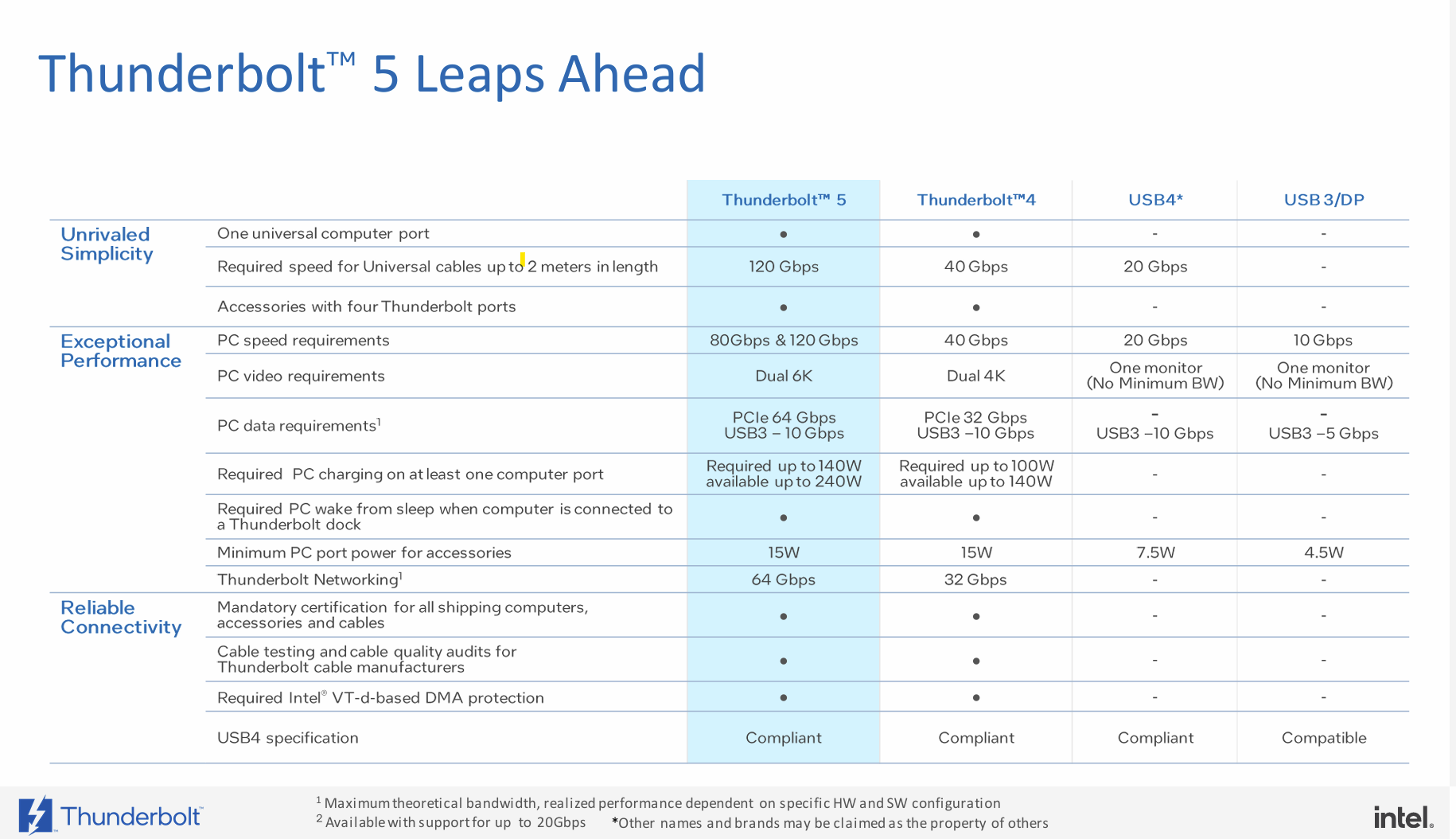
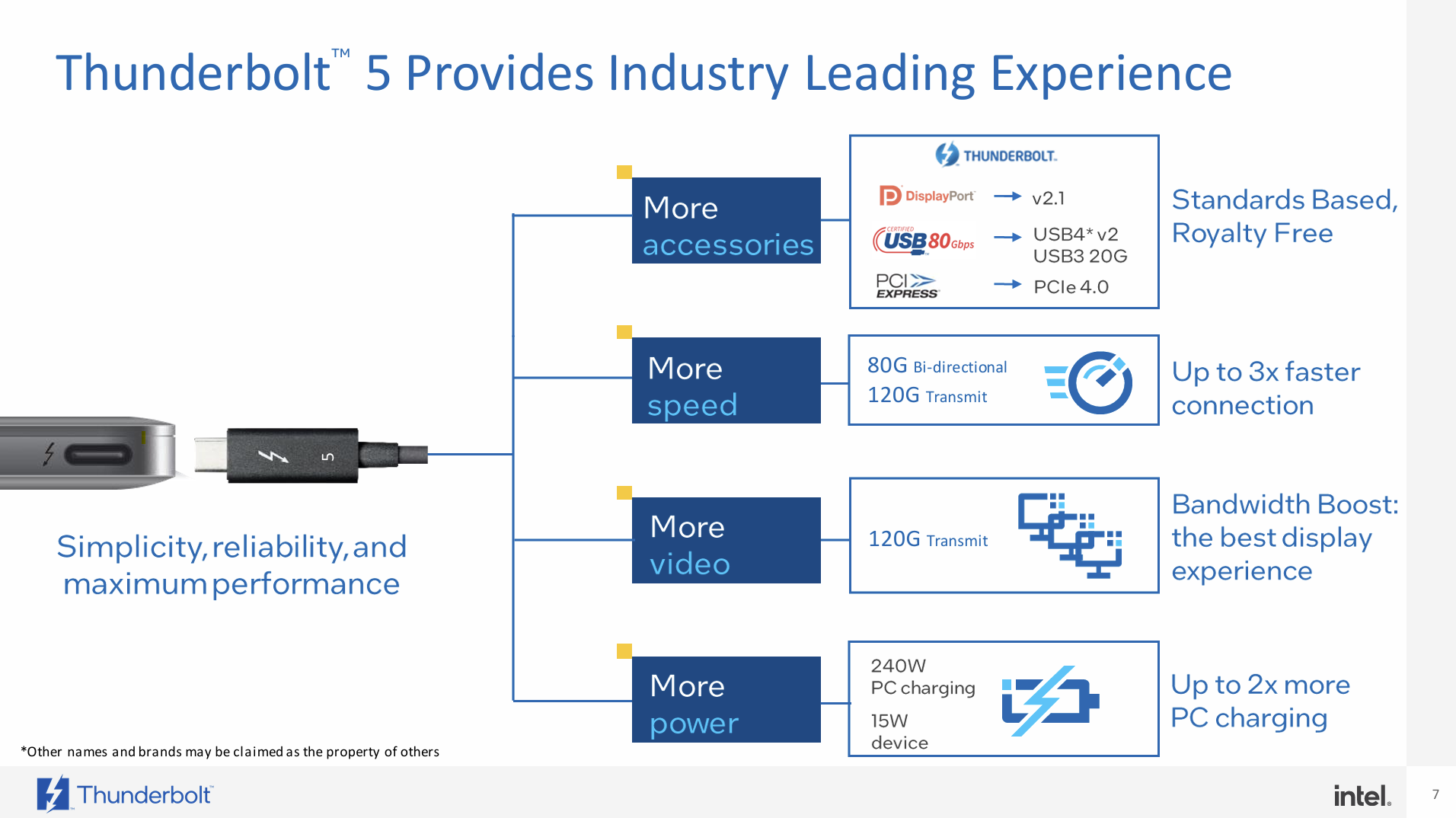



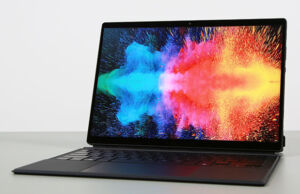
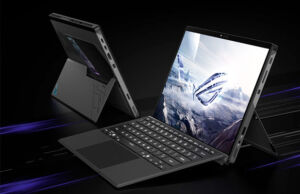

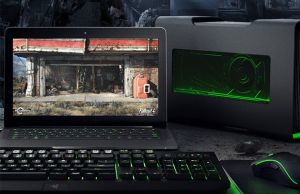
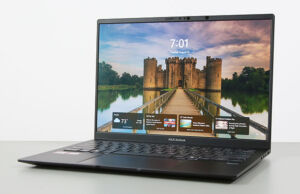
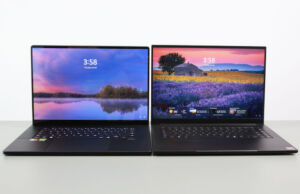
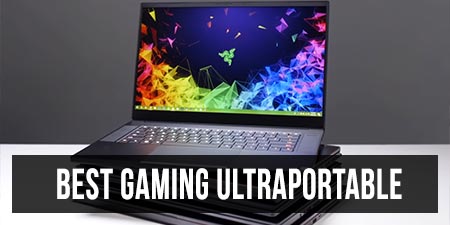
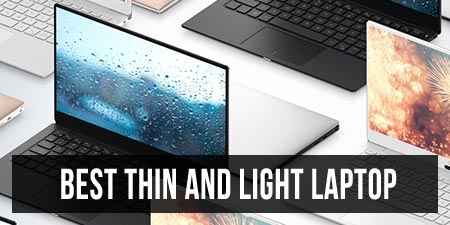
ytee
March 10, 2019 at 11:28 am
I believe lenovo yoga s730 should be on the list too?
rdzah
March 12, 2019 at 9:37 pm
Awesome list!
2 things:
– Gigabyte Aero 15 X and 15 Y have the Max-Q variant of nvidia RTX cards
– MSI GT63 Titan does _not_ have a Thunderbolt port
Thus afaik at this point in time there does not yet exist a 15" laptop with both a TB port _and_ an nvidia RTX 2080 full version (non-Max-Q) :-(
John
March 13, 2019 at 2:37 am
Hi! Something I found out the hard way recently, is that not all Thunderbolt 3 laptops support charging/power by TB3. It would be very useful if this list included which laptops support this part of TB3. You did state that, "TB3 can also be used for charging your device, as long as it doesn’t require more than 100 W of power. So good-bye dedicated charging cables." however, this is not necessarily true. Even though it only supports 100 watts of power (and usually only 85 is supplied to charge/power a laptop), it SHOULD still be able to power and charge (albeit at a slower rate) laptops that have larger power supplies that exceed 100 watts…which are many of them. What I'm saying is that this is not a hard and fast rule and it's up to the manufacture if they want to disable this feature or not. For example; I bought (this was my hard lesson) a dell laptop last year that comes with a 180 watt power brick. I think nothing of this because I know that 180 watts is only required when it's REALLY churning away and even then, it's not utilizing 180 watts because it probably leaves headroom so that the battery will still charge slowly. In other words, worst case scenario; the battery would drain really slow at full crank…IF they even allowed charging via TB3 which, unfortunately they don't.
So at the end of the day, you can't tell simply by the power brick, you have to actually look for support fromt the manufacturer for specific models. It's asking a lot, and I by no means expect this (it's simply a suggestion/request) but it would be very helpful to a lot of people as this is a confusing and in many cases, unintentionally misleading aspect of Thunderbolt 3.
Thanks for your time!
Andrei Girbea
March 29, 2019 at 1:19 pm
Hi, thanks for the suggetion, I'm going to gradually add this info to the lists.
Gary Emery
June 16, 2021 at 5:19 pm
Hi. I really found this post helpful. With a broken computer, I'm looking for a 15.6 inch or close laptop with a gd screen, and TB 4 plus spare ports. A laptop that can multitask, and potentially do some gaming with poss an external GPU. But gaming's not my priority. Fast file transfer speeds and a good balanced computer wld be great! Cheers for forum comments.. very helpful
Will
March 18, 2019 at 5:11 pm
Hi, the Lenovo Legion Y530 is in this list but your own review from this site says it's not a thunderbolt 3 port. so which is correct? thanks
Andrei Girbea
March 25, 2019 at 11:15 am
the Y530 is not in the list. The Y730 on the other hand is, which gets a Tb3 port
Karl the Pagan
March 31, 2019 at 9:23 pm
According to the Lenovo PM at PAX East 2019 the Y730 15" has 1×2 TB3 port. The Y730 17" has a 1×4 TB3 port.
Andrei Girbea
April 1, 2019 at 11:49 am
thanks, updated.
Harry Taynor
March 25, 2019 at 7:02 pm
I recently got a Dell g5 15. Which has a tb3 port.
Eddie
March 26, 2019 at 10:41 am
I am curious. When was the Samsung Notebook 9 Pro 13.3" model added? I ask because the 2017-2018 models do NOT have TB3. The 2019 model which is for sale now but hasn't shipped yet, has 2 x4 TB3 ports and 1 type c.
Andrei Girbea
March 29, 2019 at 3:32 pm
That was supposed to be the new Notebook 9 Pen series, updated
Amiel
March 29, 2019 at 1:23 pm
Can you look into Asus Zephyrus M GM501 please?
Eddie
March 30, 2019 at 4:33 am
Who updates this? It's missing the 2019 Samsung Notebook 9 Pro 13
Mike N
December 12, 2019 at 7:52 pm
Do you have that laptop? I do and I regret it
Alejandro
May 29, 2020 at 11:18 am
why? what's the problem?
Don
April 30, 2019 at 3:39 pm
The Razer Blade Pro now comes with up to a 9th gen H cpu and RTX 2080 max q
Aidan Lindon
June 2, 2019 at 2:15 am
Where are the Ryzen laptops?
Tom
July 17, 2019 at 12:59 pm
Thunderbolt is a intel product, usb 4 is basically thunderbolt 3 under the hood, when that comes out we'll get on AMD machines
DAVID N
September 7, 2019 at 4:04 pm
TB3 40 GBPS is already on AMD motherboards, you just need to know where to look.
xpclient
January 22, 2020 at 9:43 pm
Not in laptops/mobile platform. Only in AMD desktop motherboard where you can just add a PCIe Thunderbolt 3 card.
kay chan
April 17, 2020 at 11:24 am
i am also waiting for ryzen 4000 series laptop with thunderbolt 3. hoping maybe razer or asus will make one soon. Rog G14 looks very promising.
Andrei Girbea
April 17, 2020 at 12:01 pm
Not gonna happen anytime soon
Ralf
June 13, 2019 at 7:46 am
Can you add an update history? It would be nice to know the latest members to this list. Awsome work!
Peter
June 23, 2019 at 7:46 pm
Hi, I have a HP ZBook 17 with two TB3 connectors. How can I find out how many TB3 links are in? Do You have some manual about that?
Thank You.
Potato
November 6, 2019 at 12:47 am
I was incorrect actually, the envy does not have two thunderbolt ports. It seems hp has a very similar icon to tb3 for a different function
Faris
November 10, 2019 at 5:31 pm
Acer Switch 7 is missing here. It's a 13.5" Windows tablet which also features Thunderbolt 3 port.
Nick
December 11, 2019 at 6:16 pm
Apparently the 2019 Dell Inspiron 7000 2-in-1 has Thunderbolt 3
Stephan
September 30, 2020 at 11:34 pm
yup
Morin
January 11, 2020 at 11:29 pm
Bonjour, il faudrait ajouter le MSI prestige 15
Daniel
February 17, 2020 at 4:20 am
HP elitebook 840 G5 shown in list is only X2 not x4. I bought one based off this list and finding out now it's incorrect..
Andrei Girbea
February 17, 2020 at 1:20 pm
Hi Daniel. I'm sry for the error, we're doing our best to keep this updated and correct, but errors can still slip in.
think
March 31, 2020 at 12:07 pm
Can you also add those https://www.dell.com/support/article/en-us/qna44089/thunderbolt-3-40gbps-data-transfer-rate?lang=en ?
MasutaMaestro
June 9, 2020 at 5:09 am
Alongside their Swift cousins, the latest Acer Spin 3 and Acer Spin 5 have TB3 as well
rajeev
June 25, 2020 at 12:31 am
Hello,
I have hellios 500 intel 7th gen gtx 1070, 2 thunderbolt port c ( gen 2 3.1 type c =only 10gbps transfer rate )
can you confirm please if this will work for a egpu dock station ? I dout as all the mention above laptop have same thing but no original thunderbolt port c = 40 gbps speed.
Please clear the dout!
Thanks.
Andrei Girbea
June 25, 2020 at 10:32 am
As far as I remember, there's a Thunderbolt 3 port on that laptop and should work with an eGPU. There's also a secondary USB-C gen1 port.
Rajeev
June 25, 2020 at 10:41 am
As per manual it says Thunderbolt 3 2 ports but gen 2 3.1 c port only which has a power of 10gbps only and a 5 v 3 amp power out put ! I am so confused as no one tested the port speed yet and no reviews but as per manual it is the info ! Can u do search and update me I am also trying to find !
Rajeev
June 26, 2020 at 10:44 am
Hello andrei,
Helios 500 intel
After doing lots of research I found that one port is thunderbolt port is gen 2 3.1 connection type and speed 5 gbps and next one is thunderbolt 3 original port near to Ethernet jack ! But they put thunderbolt symbol on both ports by mistake ! That port had 40gbps speed ! I hope I am correct ! Just confirm me if I am correct ! Thanks 🙏
Andrei Girbea
June 26, 2020 at 11:35 am
That's what I said as well, one of the ports is TB3 PCIe x4, and the other is just an USB-C gen1
Staffan Sjöberg
July 19, 2020 at 11:34 am
Thunderbolt gives the advantage to connect and start the laptop from a docking station. This means that the laptop can be folded and put away while using your screen on the desk and a separate keyboard and mouse at your office or home.
Kingsman784
August 22, 2020 at 9:02 pm
The Lenovo C640 has the TB3 symbol next to the USB-C port but the spec sheet says that it’s just a regular USB-C laptop. Does anybody know for sure whether or not it has Thunderbolt 3?
Here’s the link: https://www.lenovo.com/us/en/laptops/yoga/yoga-c-series/Yoga-C640/p/88YGC601300
Thanks!
xpclient
January 15, 2021 at 2:48 am
Add the Dell Latitude 5510 and 5511: https://www.dell.com/en-in/work/shop/business-laptop-notebook-computers/new-latitude-15-5510-laptop/spd/latitude-15-5510-laptop/al5510?view=configurations&configurationid=2b68b851-6b20-46b6-8875-76ad6094868c
xpclient
January 20, 2021 at 10:36 am
The Dell Latitude 5510 and 5511 also have Thunderbolt but only 1 x2 (20 Gbps) and only in certain configurations (10300H or 10310U CPUs e.g.)
HP ZBook Fury 15 G7 has 2 x4 (40 Gbps) Thunderbolt 3 ports.
Jarvis
March 27, 2022 at 7:52 am
Is there an updated article on this? I am also looking for TB3/TB4 laptops.
Andrei Girbea
March 28, 2022 at 11:26 am
Not really. I'll have an update here in due time, but most 11th and 12th gen Intel laptops support Thunderbolt 4 these days
Miguel
August 23, 2022 at 3:00 pm
Where can i find an updatet list for late 2022
Andrei Girbea
August 24, 2022 at 7:21 am
Most recent Intel laptop support THunderbolt 4, so there's no real reason for a follow-up update
Mia
September 26, 2024 at 10:44 am
Will there be any more updates now?
Andrei Girbea
September 30, 2024 at 6:39 pm
Most new Intel laptops offer at least one TB4 port
John
July 22, 2025 at 8:19 pm
Will there be updates for TB5?
Andrei Girbea
July 23, 2025 at 8:03 am
Yes, I'm working on an update.
Santo
July 8, 2025 at 11:22 pm
Would like to see a new list for thunderbolt 5 laptops
NikoB
July 26, 2025 at 2:02 pm
The main difference between TB3 and TB4 is support for HDR10/DV data transmission, as TB3 does not support Display Port 1.4+.
TB supports 2x8K@60 (only 24-bit color, 30-36 bit requires more bandwidth, which is important for people working professionally with color) in the extended 120Gbps mode (traffic tunneling is not compatible with the usual DP Alt Mode – this is an extremely important difference, since, for example, monitor models until 2025 did not have support for HDMI 2.1 FRL6 (the maximum bitrate was 24Gbps) and therefore 4k@120Hz+ mode with HDR10 were also supported only in TB4 traffic tunneling mode with a bandwidth of up to 40Gbps – owners of HDMI 2.1 ports with FRL6, but without TB4 ports are deprived of the opportunity to use such monitors in maximum modes without lossy compression – DSC). In approximately the same way, you need to carefully evaluate 2025+ monitors – if they do not declare support for traffic tunneling mode in Alt Mode 120Gbps in one direction (40 in the other), then there will be no support for 2x8k@60Hz.
It's time to update the TB5 models table with the new 18" Lenovo line – L9.
Another important point about TB5 laptops is where the signal source is taken from – from igpu or from dgpu. Obviously, with dgpu this is only possible with the 5xxx NVidia line, and the solution with igpu will be very problematic in terms of performance, given the strong remaining of desktop Intel/AMD processors (except for the top HEDT lines for workstations at wild prices with 4-8 channel controllers) from the AMD Zen5 Halo mobile series with a 256-bit memory controller (although it has a flaw in read mode – there is only 128-bit mode in fact), with which you can hardly find laptops, but the Chinese are already selling a bunch of miniPCs in a 128GB configuration on trading platforms (and they take them mainly for working under neural networks, because there you can allocate VRAM 96GB from 128GB of RAM).
And as I have written many times, HDMI 2.2 and DP2.1 (as well as TB5) are essentially pass-through standards for entering the world of 8k resolution. Until there is a new standard for at least 160-320Gbps, and with new optical cables by default (which dramatically reduces the prices of cheap mass cables and ensures their 100% reliability in transmitting such streams, and immediately guaranteed at distances of up to 50-100m) everything will stall. Obviously, 8k monitors are not suitable today for gaming in native mode (even 4k is questionable). These are purely working solutions with the highest possible ppi on diagonals up to 32" and ideal clear text for the eyes, the same graphics. This is exactly what the industry should strive for, which has been "dynamite" the demands of professionals for 10 years in this regard, despite the fact that discrete video chips with dedicated VRAM have been servicing such solutions for those same 10 years without any problems…
Unfortunately, progress is not going as fast in this regard as we would like and as it could…
Andrei Girbea
July 29, 2025 at 9:39 am
Thanks, appreciate your feedback!
So far there's no TB5 via iGPU as far as I can tell. Perhaps with next-gen Intel hardware.
NikoB
July 31, 2025 at 12:28 pm
In fact, igpu can work with TB5 Barlow Bridge from Intel and it can tunnel DP traffic from igpu Intel, because they officially support UHBR20 by aggregating DDI links.
Zen5 Halo igpu also supports UHBR20 and the only question is whether it can provide aggregation of 3x40Gbps (3xUHBR10) in 120Gbps mode. As has long been known, AMD deliberately does not provide publicly available datasheets for its series (and even the description on their websites is incorrect, as I previously pointed out in the video decoder sections, which they finally corrected closer to May 2025 and not for all series)
It is obvious that Intel can provide aggregation of 3xUHBR10 on its igpu. Since they officially have up to 4 DDI links.
It's just that manufacturers, for some reason, do not make such solutions, although the opportunity exists – most likely they understand that with the low bandwidth of 128-bit RAM of mobile and desktop Intel processors, this makes little sense in terms of ideal operation of several screens simultaneously when using slow RAM instead of the ultra-fast VRAM of dgpu (it is up to 17 times faster, although according to "Amdahl's law" the bottleneck there is also regular RAM, when there is an intensive exchange of ram-vram). Everything will change when Intel catches up with AMD in the memory controller and offers a 256-bit controller in mass series, and in HEDT (we are not talking about processors for workstations at the price of a laptop with 5090, but about regular series) we would like a 512-bit memory controller, like in Apple M4 Max (although there are questions about its real performance there too). By the way, owners of NVidia cards of the 3-4-5 generations that use several monitors simultaneously via outputs with dgpu constantly complain about wild consumption in this mode, despite the fact that via igpu the same links in TB4 mode consume an order of magnitude less. This is another reason to abandon Nvidia's dpgu for these purposes, but the bandwidth of the RAM is extremely important, and only Zen5 Halo can offer a fairly high (albeit inferior in comparison with declarations of 256 bits) RAM bandwidth, which the lagging Intel cannot at the moment (although it now has a better process technology at TSMC than AMD).
In general, everything again rests on the bandwidth of the RAM. This is the Achilles heel of x86. TB5 will become mainstream only after the appearance of mass processors and notebook SoCs with a 256-bit memory controller (without a flaw in the read mode, as in Zen5 Halo). And the dream of mass 8k@120Hz monitors (not to mention the successors of HDMI 2.2 and DP2.1) and higher in 30-36 bit color mode will come true when mass series of processors reach a throughput of at least 500 GB / s, which is now possible only in server chips with an HBM3 / 4 controller. That's why I wrote a comment earlier in another article that something really interesting in the consumer segment will be released no earlier than 2030. In the meantime, in general, there is technological stagnation from this perspective. I do not yet see official declarations on the transition to optics (which would be an excellent solution for TB5 + docking stations in terms of flexibility of installation by distances) and declarations of a mass transition to 256-bit controllers of both symbiotic companies in the x86 market. And there is a feeling (somewhere in the subconscious this thought has already deepened) that the reign of the x86 market on desktops and laptops is coming to an end…
It will be extremely difficult for software developers who have previously bet on the x86 platform…
Well, these are my thoughts on the introduction of new standards for now..
p.s. and I still hope for the restoration of common sense in laptop manufacturers, which has long been lost with USB-C ports used for work from a power supply more and more often – when they finally start installing 2 TB4/5 ports symmetrically on the left and right (and now they also supply power in office models), so that it is convenient for right-handed and left-handed people. So far, such laptops seem to be made only by HP in rare models, apparently they have the most understanding designers. Lying on a bed or a sofa with an office laptop while running on a power supply (since all x86 are significantly slower in everything from a battery, and you don't have to think about charging all the time and you can save battery charge cycles, especially when replacing it with a new original one in most countries of the world is a real problem for reasonable money) while replacing a durable and comfortable round corner power plug on the side with USB-C sticking out on one side (in 99% of cases on the left side) is a completely stupid trend on the market (although Intel, when presenting TB4, recommended putting ports symmetrically on the left and right), although it is understandable that this is for the sake of saving the cost of motherboards for wiring lines symmetrically on both sides of the laptop. But they can make a USB-C power output at the back, but they don't do it on purpose, although there is always enough space there…